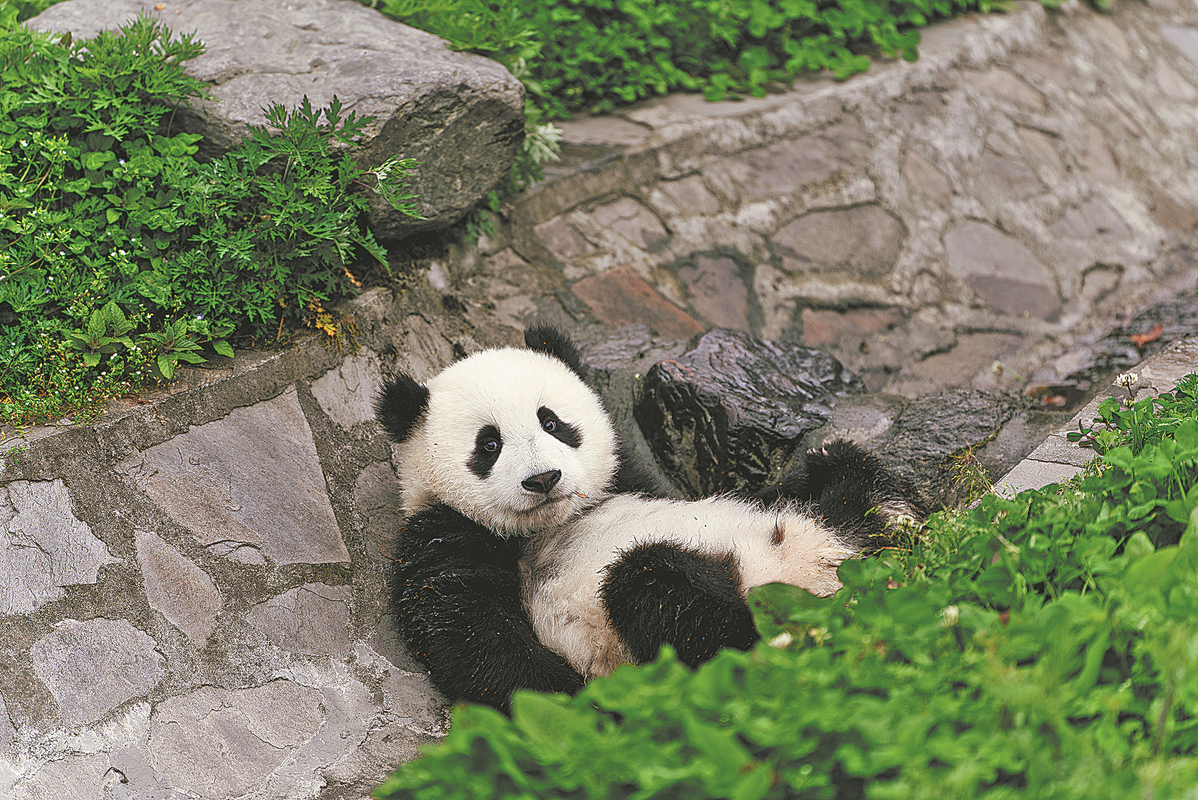Foreign experts hail nation's biodiversity heroes


Series of efforts to safeguard species welcomed
As Terry Townshend sat in a secluded bamboo grove at the Research Base of Giant Panda Breeding in Chengdu, Sichuan province, he began to recall the people he had met during his trip. "For me, these people are heroes, and a lot of them are unsung heroes," he said.
It was the last day of the trip for wildlife conservationist Townshend and Alice C. Hughes, an associate professor at the Chinese Academy of Sciences' Center for Integrative Conservation.
Invited by Xinhua News Agency's China Chat Show, the two experts from the United Kingdom traveled to numerous cities, villages and nature reserves in Sichuan and Shaanxi provinces, visiting and interviewing conservationists and biodiversity specialists.
"Most of their stories don't get told, so we should celebrate the few that do," Townshend said.
While in Sichuan, Hughes visited retired professor Hu Jinchu, known affectionately as China's "panda papa". They looked through Hu's photo album at his home and recalled the day 47 years ago when Hu first set foot in rural Sichuan to investigate wild giant pandas.
The 92-year-old is China's pioneer of giant panda ecological and biological research. "We ourselves didn't even know how many giant pandas there were in the country," Hu said.
There used to be a lack of information in China about the pandas, whose name translates as "giant bear cat". Eventually they became national treasures.
In 1972, when United States President Richard Nixon boarded his flight home from Shanghai, he returned to Washington with not only memories of China, but also a pledge from Chinese Premier Zhou Enlai that China would give a pair of giant pandas to the US.
A survey on rare animals was later requested in China, particularly on giant pandas found in Sichuan, Gansu and Shaanxi provinces.
In 1974, Hu was sent to Sichuan and was appointed team leader of a survey group of some 30 members to investigate the rare species discovered in the province. During the investigation, he invented the comparative analysis procedure known as the "Hu method." The process uses giant panda feces to determine the creatures' age, population and range of activities, as well as other vital information.
In the 1980s, the China Conservation and Research Center for the Giant Panda was established in Wolong, Sichuan, in cooperation with the World Wildlife Fund, now the World Wide Fund for Nature, or WWF.























